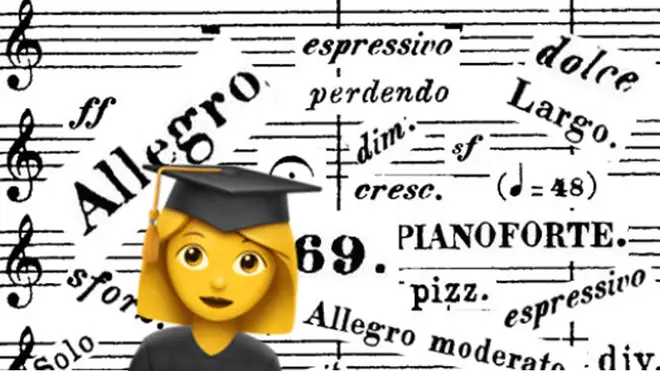On Air Now
Calm Classics with Hannah Scott-Joynt 10pm - 1am
4 June 2018, 15:02 | Updated: 5 June 2018, 16:14

Music is never loud or quiet, it’s ‘forte’, ‘piano’ or somewhere in between. And it’s all because Italian music theorists got there first…
When the rules for music notation were worked out and written down, it was all done in Italian. Around 1000 AD, Guido of Arezzo created the earliest version of the heads-and-stems-on-staves structure that we know today.
It looked something like this:
#SabiasQue? Guido de Arezzo sacó las notas de la escala musical por las iniciales del último verso del himno litúrgico de San Juan Bautista. pic.twitter.com/RUvkKbfiov
— El Sistema Táchira (@SistemaTachira) April 29, 2017
Over the next few hundred years, musicians built on Guido’s system, and music theorists added useful features like note values and time signatures.
But composers wanted more. They wanted to describe their music in more detail and tell musicians exactly how it should be played. So, they wrote musical directions on their pieces like ‘andante’ and ‘rallentando’.
After a while, these terms became quite fashionable. So, when the rest of Europe – as it existed back then – started notating their music, they continued the trend in the same language.
There are some Italian terms like ‘tempo’, ‘adagio’, ‘allegretto’ and ‘rallentando’ which are only used in the context of writing or reading music.
But others, like ‘concerto’, ‘piano’, ‘soprano’ and ‘opera’ were so stylish that they have made their way from the original Italian into our everyday musical vocabulary.
And it wasn't just the terms themselves that were taken on – European composers also adopted compositional forms like the cantata, partita and rondo.
What's more, Italian musical instrument makers like Stradivari, Guarneri and Amati slowly became the stuff of musical legend.
Here’s Nicola Benedetti, giving us a tour of her Strad:
Italian is often called a naturally musical language – so there’s something fitting in the fact that it’s this language that’s used for musical directions.
This isn’t to say that every composer has stuck to the standard. Beethoven’s Pastoral Symphony No. 6 is marked in German, while moments of Debussy’s Clair de lune are marked in French.

Many have! Mahler, for example, stuck to German for many of the directions in his symphonies. And perhaps writing in their own language allows composers to more effectively communicate their meaning. After all, some things are always lost in translation.
But then, crucially, music – and music directions – would no longer be a universal language…